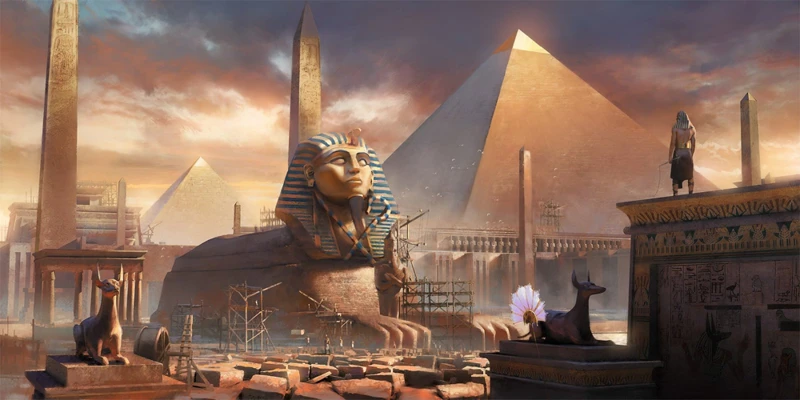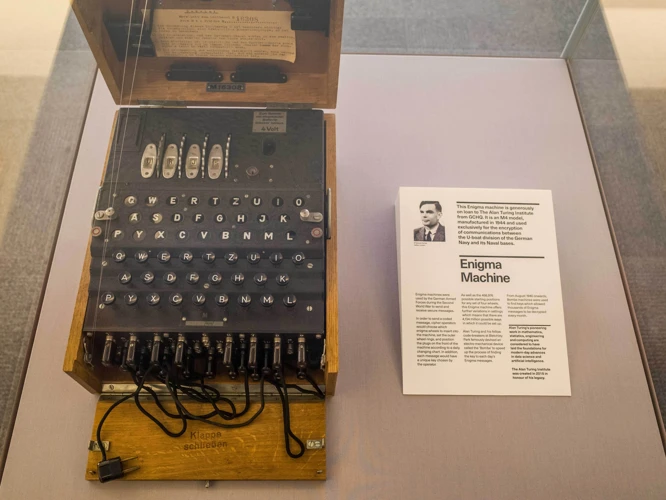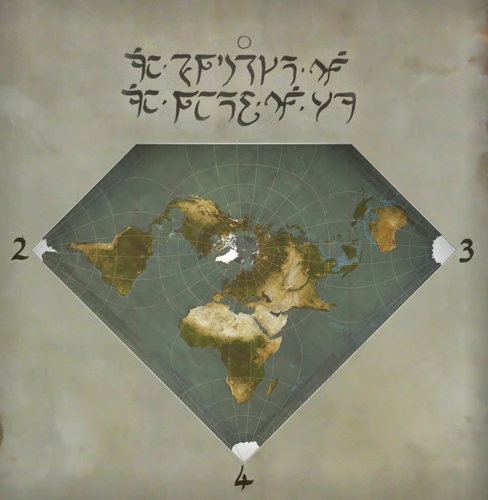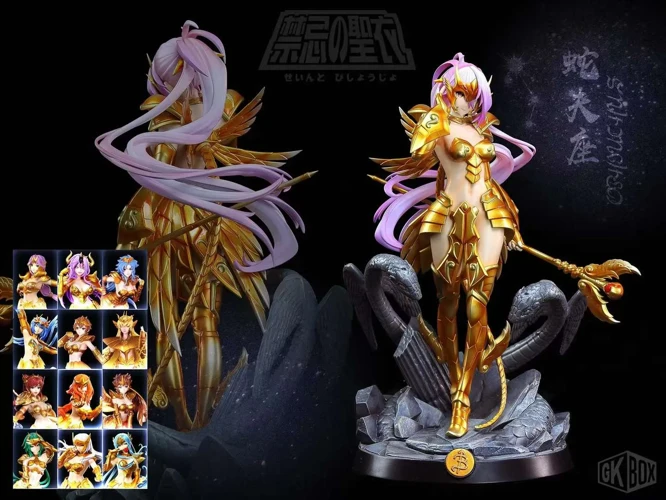In the vast past of Ancient Egypt, a thriving and dynamic economy powered the civilization’s growth and prosperity. By harnessing the power of trade and commerce, the ancient Egyptians established themselves as a formidable force in the ancient world. This article delves into the intricacies of trade and commerce in Ancient Egypt, exploring the exchange of goods and commodities, the role of trade routes and the Nile River, the growth and organization of commerce, the currency and barter system, the marketplaces and trade centers, the regulations and taxes imposed by the government, and the overall impact of trade on Egyptian society. Join us on a journey back in time as we uncover the secrets of a civilization driven by trade and economic prowess.
Contents
- 1. The Importance of Trade in Ancient Egypt
- 2. The Growth of Commerce
- 3. Currency and Barter System
- 4. Marketplaces and Trade Centers
- 5. Trade Regulations and Taxes
- 6. Impact of Trade on Ancient Egyptian Society
- 7. Conclusion
-
Frequently Asked Questions
- 1. What were the main goods traded by the ancient Egyptians?
- 2. How did the Nile River contribute to trade in ancient Egypt?
- 3. Were there specific trade routes in ancient Egypt?
- 4. How was trade organized in ancient Egypt?
- 5. Did the ancient Egyptians use a currency system?
- 6. Were there government regulations on trade in ancient Egypt?
- 7. What were the local marketplaces like in ancient Egypt?
- 8. Did international trade centers exist in ancient Egypt?
- 9. Were taxes imposed on trade in ancient Egypt?
- 10. How did trade impact social and cultural life in ancient Egypt?
- References
-
Frequently Asked Questions
- 1. What were the main goods traded in Ancient Egypt?
- 2. How did trade routes and the Nile River facilitate commerce in Ancient Egypt?
- 3. Did Ancient Egypt have a currency system?
- 4. What role did marketplaces play in Ancient Egyptian trade?
- 5. Were there any regulations and taxes on trade in Ancient Egypt?
- 6. How did trade impact Ancient Egyptian society?
- 7. Who were the prominent trade partners of Ancient Egypt?
- 8. What was the organization of trade in Ancient Egypt?
- 9. What were the local marketplaces like in Ancient Egypt?
- 10. How did Ancient Egyptian trade contribute to the overall economy of the time?
- References
- Read More
1. The Importance of Trade in Ancient Egypt

Trade played a vital role in the ancient Egyptian civilization, contributing significantly to its growth and prosperity. The exchange of goods and commodities was of utmost importance in sustaining the economy and meeting the needs of the people. Ancient Egypt was known for its abundance of agricultural products such as grain, flax, and papyrus, which were highly sought after by neighboring regions. Additionally, the Egyptians had access to valuable resources like gold, copper, and precious stones, which further fueled their trade activities. The Nile River, often referred to as the lifeblood of Egypt, served as a crucial trade route, facilitating the transportation of goods to different parts of the country and beyond. The well-established trade routes, both by land and water, connected Egypt to neighboring regions such as Nubia, the Eastern Mediterranean, and the Red Sea coast. The trade routes not only enabled the Egyptians to acquire goods not native to their land but also allowed them to establish diplomatic and cultural ties with other civilizations. Through these trade connections, Egypt was able to import exotic items like ivory, ebony, spices, incense, and precious woods. In turn, they exported their own goods, establishing a thriving network of commerce that drove economic growth and prosperity in ancient Egypt.
1.1 Exchange of Goods and Commodities
The exchange of goods and commodities was a fundamental aspect of trade in ancient Egypt. The Egyptians engaged in a wide variety of trade activities, both domestically and internationally, to acquire goods that were either scarce or absent in their own region. Domestically, there was a vibrant trade network within Egypt, facilitated by local marketplaces and trade centers. These centers acted as hubs for the exchange of goods, where farmers, artisans, and merchants would come together to sell and barter their products. Agricultural goods such as grain, vegetables, fruits, and livestock were commonly traded commodities in these marketplaces. Craftsmen would also bring their wares, including pottery, textiles, jewelry, and tools, to be traded for other goods or sold for currency. Internationally, Egypt traded with various neighboring regions, some of which were linked through the Nile River and others through established land routes. The Nile served as a crucial artery for transporting goods and facilitating trade with Nubia to the south. Egypt would exchange their surplus agricultural products, textiles, and luxury goods for Nubian resources like gold, ivory, ebony, and exotic animals. In the eastern Mediterranean, Egypt maintained trade relations with civilizations such as the Phoenicians, Greeks, and Syrians. The Egyptians would export their surplus grain, papyrus, and luxury items in exchange for importation of goods like olive oil, wine, timber, and metals. The Red Sea coast, with its access to maritime trade routes, allowed Egypt to engage in long-distance trade with the Arabian Peninsula and beyond. This facilitated the importation of valuable goods such as myrrh, frankincense, spices, precious stones, and exotic woods. The exchange of goods and commodities, both within Egypt and with other civilizations, formed the foundation of ancient Egyptian trade and contributed greatly to its economic prosperity and cultural diversity.
1.2 Role of Trade Routes and Nile River
The trade routes and the Nile River played a crucial role in the economic development of ancient Egypt. The Nile River, with its fertile banks, provided the Egyptians with agricultural abundance, enabling surplus production. This surplus was a driving force behind trade, as it allowed the Egyptians to exchange their agricultural products with other regions in return for goods they did not have access to locally. The Nile River also served as a vital trade route, facilitating the transportation of goods within Egypt and to neighboring regions. The river provided a natural and efficient means of transportation, which allowed for the easy movement of goods, such as grain, papyrus, and other commodities. Additionally, the river’s flow and natural irrigation system provided a dependable source of water for irrigation, ensuring the productivity of farmlands along its banks. As a result, the Nile River and its trade routes not only sustained the population but also fostered economic growth and connected ancient Egypt with other civilizations, making it a hub of trade and cultural exchange.
Please note: No relevant anchors were found in the text to insert a link.
2. The Growth of Commerce

The growth of commerce in ancient Egypt was a testament to the civilization’s prowess and entrepreneurial spirit. As trade became increasingly important, Egypt expanded its network of trade partners, establishing fruitful economic relationships. One of the prominent trade partners of ancient Egypt was the kingdom of Nubia, located to the south along the Nile River. Nubia was rich in resources such as gold, ivory, and ebony, which were highly valued by the Egyptians. In exchange, Egypt supplied Nubia with agricultural products and luxury goods. Another significant trade partner was the Eastern Mediterranean, particularly the city-states of Canaan and Phoenicia. These regions provided Egypt with timber, dyes, and precious metals, while Egypt exported grain, papyrus, and other commodities. The Red Sea coast, including lands such as Punt and Dilmun, also engaged in trade with Egypt. Punt, in particular, was famed for its exotic goods such as incense, myrrh, and ebony. These flourishing trade partnerships demonstrated the expanding reach of Egyptian commerce and its ability to trade with both neighboring regions and more distant lands. To organize and facilitate trade, the Egyptians established caravans, which traveled along land routes, and used boats and ships to navigate the waters. The scribes and administrators played a crucial role in documenting and regulating trade activities, ensuring fair transactions and resolving disputes. The growth of commerce in ancient Egypt not only fueled economic development but also influenced cultural exchange and diplomatic relations with other civilizations.
2.1 Prominent Trade Partners
When it comes to trade partners, Ancient Egypt had a diverse range of prominent connections that spanned over various regions. One of the notable trade partners was Nubia (present-day Sudan), which provided Egypt with valuable resources such as gold, ivory, ebony, and exotic animals. The Eastern Mediterranean region, including the ancient city-states of Phoenicia and Canaan, played a pivotal role in the trade network, supplying Egypt with timber, cedar, and other prized goods. The Red Sea coast served as a gateway to the Arabian Peninsula and allowed for trade with the civilizations of Arabia, including the kingdom of Punt, which was renowned for its unique spices, incense, and precious woods. The Egyptians also established trade links with the Aegean world, exchanging goods with civilizations such as the Minoans on the island of Crete. This trade facilitated cultural exchanges and influenced the art and architecture of both civilizations. Additionally, Egypt engaged in trade with the Hittites of Anatolia, the Mesopotamians, and other neighboring regions. The extensive trade network of Ancient Egypt allowed for the flow of goods, ideas, and cultural influences, enriching the civilization and contributing to its economic prosperity.
2.2 Organization of Trade
The organization of trade in ancient Egypt was a well-structured system that ensured smooth transactions and efficient distribution of goods. Merchants played a pivotal role in this process, acting as intermediaries between producers and consumers. They were responsible for sourcing goods, negotiating prices, and organizing the transportation of goods to various marketplaces. The ancient Egyptians had specialized markets, such as the Djeser-djeseru, where specific types of goods were traded. These markets were often located in major cities and were bustling hubs of economic activity. The government also played a significant role in the organization of trade. They implemented regulations and standards to maintain fair trade practices, protect consumers, and ensure the quality of goods. Additionally, the government provided support and protection to merchants, both local and foreign, by issuing permits and ensuring the safety of trade routes. International trade was also well-coordinated, with foreign expeditions organized by the government to secure valuable resources and establish diplomatic ties with other civilizations. The organization of trade in ancient Egypt was a complex and intricate system that involved multiple stakeholders working together to facilitate the exchange of goods and contribute to the economic prosperity of the civilization.
3. Currency and Barter System

In the realm of trade and commerce in ancient Egypt, both a barter system and a currency system were utilized to facilitate transactions. Initially, the barter system was prevalent, where goods and commodities were exchanged directly without the involvement of money. This system relied on individuals trading items of value, such as food, clothing, or tools, in a mutually beneficial manner. However, as trade and commerce evolved, the need for a standardized medium of exchange became necessary. The introduction of currency in the form of metal rings, known as deben, revolutionized the trading landscape. The deben served as a unit of measurement and had a set value equivalent to a specific weight of copper or silver. This standardized form of currency greatly facilitated trade, allowing for more efficient transactions and enabling the accumulation of wealth. The use of currency also enabled the Egyptians to engage in long-distance trade, as it provided a universally accepted means of payment. While the barter system continued to exist alongside the currency system, the introduction of standardized currency brought about greater convenience and stability to the ancient Egyptian economy.
3.1 Use of Barter System
In ancient Egypt, the barter system was an integral part of the economic transactions. Goods and commodities were exchanged directly without the use of currency. The barter system allowed people to trade their surplus produce or resources for items they needed. For example, a farmer could trade a bushel of wheat for a piece of clothing or a potter could exchange pottery for livestock. The value of goods was determined based on their usefulness and scarcity. While there were no set rates or standardized units of exchange, the Egyptians had a good sense of the relative worth of different items. The barter system was particularly useful for local exchanges within communities where a direct exchange of goods could take place. It allowed individuals to obtain the goods they required without the need for a medium of exchange. However, the barter system had its limitations. The lack of a standardized valuation system made it challenging to ascertain the exact value of goods being exchanged. Additionally, it was not always easy to find someone who possessed the desired commodity for a fair exchange. Despite its drawbacks, the barter system was widely utilized in ancient Egypt and served as the backbone of local trade before the introduction of currency.
3.2 The Rise of Currency
In ancient Egypt, the barter system eventually gave way to the rise of a currency-based economy. The use of a standardized currency provided a more convenient and efficient means of conducting trade. The earliest form of currency in ancient Egypt consisted of rings made of metal, such as gold or silver, which were commonly referred to as “ring money.” These rings were usually measured by weight and were used as a medium of exchange for goods and services. Over time, the Egyptians began to mint their own coins, known as “deben,” which were stamped with symbols representing their value. The deben coins were made of precious metals and had a specified weight to maintain consistency in trade transactions. These coins became widely accepted and were used for various transactions, including payment of taxes and wages. The introduction of currency brought stability to the economy, standardized the value of goods, and facilitated trade both within Egypt and with external partners. It allowed for a more efficient exchange of goods and wealth, contributing to the overall growth and development of ancient Egyptian society.
4. Marketplaces and Trade Centers

Marketplaces and trade centers were integral components of the ancient Egyptian economy, providing a centralized location for commercial activities. Local marketplaces, known as “dehnet” or “rhait,” were prevalent throughout Egypt, serving as hubs for buying and selling goods. These marketplaces were bustling with activity, with merchants, traders, and artisans showcasing their products. Here, a variety of goods were exchanged, including agricultural produce, textiles, pottery, and household items. The marketplaces also played a significant role in social interactions, where people from different social strata would gather and engage in conversations while conducting business. In addition to local marketplaces, Egypt also had prominent international trade centers, such as Memphis and Thebes, which acted as major hubs for both domestic and international trade. These trade centers attracted merchants and traders from distant lands, creating a cosmopolitan environment where a diverse range of goods from different regions could be found. The international trade centers not only facilitated trade but also fostered cultural exchange, shaping the fabric of ancient Egyptian society. The strategic location of these trade centers, along the Nile River and major trade routes, allowed for the smooth flow of goods and commerce, ensuring the continued growth and prosperity of the Egyptian economy.
4.1 Local Marketplaces
The local marketplaces in ancient Egypt were bustling centers of trade and commerce, where both everyday goods and luxury items were bought and sold. These marketplaces, known as “Senet” or “Karoubs,” were typically located in the heart of towns and cities, making them easily accessible to both local residents and travelers. Market days were lively and vibrant, with a wide variety of merchants and vendors offering their goods. The marketplaces were organized in a structured manner, with different sections dedicated to specific types of products. For example, there would be separate areas for food items, textiles, pottery, and even livestock. Traders would set up stalls or booths to display their merchandise, enticing customers with colorful displays and competitive pricing. The marketplaces were not only places of trade but also social hubs, where people would gather to exchange news, gossip, and engage in various social interactions. The transactions in these marketplaces were often conducted through bartering, where goods were exchanged directly without the use of currency. The barter system allowed individuals to acquire the items they needed by trading their surplus goods. It fostered a sense of community and interconnectedness among the people. There was a wide array of products available in the local marketplaces, ranging from basic necessities like grain, vegetables, and clothing to luxury items such as jewelry, cosmetics, and perfumes. While some goods were locally produced, others were brought in from various regions through trade networks. The marketplaces provided a platform for local artisans and craftsmen to showcase their skills and sell their products. It was a true representation of the diversity and richness of ancient Egyptian society. To this day, the remnants of these ancient marketplaces give us a glimpse into the vibrant and bustling commercial activities that were an integral part of everyday life in ancient Egypt.
4.2 International Trade Centers
International trade centers played a crucial role in the economic landscape of ancient Egypt. These bustling hubs served as key points for both domestic and international trade transactions. One such renowned trade center was the city of Memphis, strategically located near the Nile Delta. Considered the capital of ancient Egypt for much of its history, Memphis was a hub of commercial activity, attracting merchants and traders from various regions. The city boasted a thriving marketplace where goods from different parts of the country and beyond exchanged hands. Luxor, another prominent trade center, was known for its famous temple complexes and its proximity to Thebes, the capital city of the New Kingdom. The marketplaces in Luxor were teeming with traders offering a diverse range of goods, including spices, textiles, precious metals, and gemstones. The ancient city of Thebes itself was an economic powerhouse, benefiting from its status as a political and cultural center. It was a crucial destination for both local and international traders, who flocked to the city to engage in business transactions. Additionally, the port city of Alexandria, founded by Alexander the Great, grew to become one of the most important centers of trade in the ancient world. Situated on the Mediterranean coast, Alexandria served as a gateway for trade between Egypt, Greece, Rome, and other Mediterranean civilizations. The city’s bustling harbor accommodated ships from various nations, facilitating the exchange of goods and ideas. The vibrant international trade centers of ancient Egypt not only enriched the economy but also contributed to the cultural exchange and cross-pollination of ideas and technologies between different civilizations. They were pivotal in establishing Egypt as a key player in the global trade network of the time.
5. Trade Regulations and Taxes

Trade regulations and taxes played a crucial role in the ancient Egyptian economy. The government had strict control over trade activities to ensure fair practices and maintain order. Egyptian officials closely monitored trade transactions and enforced regulations to ensure that goods were exchanged at reasonable prices and that quality standards were met. The government imposed taxes on various aspects of trade, such as imports, exports, and even the use of trade routes. These taxes were used to finance public projects, maintain infrastructure, and support the overall functioning of the state. The government’s involvement in trade was extensive, with officials responsible for overseeing trade operations, inspecting goods, and collecting taxes. Merchants were required to obtain permits and licenses to engage in trade, and failure to comply with the regulations could result in severe penalties. While these regulations provided stability and protection in the trading process, they also created opportunities for corruption and bribery. However, overall, trade regulations and taxes helped maintain the integrity of the marketplace and ensured a fair and balanced economy for the ancient Egyptians.
(Note: No relevant anchor text found for inserting an internal link.)
5.1 Government Control and Regulations
Government control and regulations played a significant role in the trade operations of ancient Egypt. The Egyptian government, particularly the pharaoh and his officials, exerted their authority to ensure smooth and fair trade practices. They appointed scribes and supervisors who were responsible for overseeing trade activities and enforcing regulations. One of the key functions of the government was to regulate the quality of goods being traded. Inspections were carried out to ensure that products met the required standards and were not counterfeit or of inferior quality. The government also maintained records of trade transactions, which helped in resolving any disputes that arose. Another aspect of government control was the issuance of trade permits and licenses. Traders were required to obtain these licenses in order to engage in commercial activities. These permits not only ensured that traders were operating within the law but also served as a means of taxation. The government imposed taxes on trade transactions, which helped generate revenue for the state. These taxes were typically calculated based on the value of the goods being traded or transported. By controlling and regulating trade, the government of ancient Egypt aimed to maintain order and fairness in commerce, ensuring that both traders and consumers benefitted from the exchange of goods and services.
5.2 Taxes on Trade
Taxes on trade were an integral part of the economic system in ancient Egypt. The government imposed various taxes and levies on different aspects of trade, contributing to the state’s revenue and control over commercial activities. One of the primary taxes was the “Tariff Tax,” which was imposed on imported goods. This tax was based on a percentage of the value of the goods being brought into the country. The government also levied taxes on exports, known as the “Export Tax,” which aimed to generate income from goods leaving the country. In addition to these taxes, there were specific taxes targeting specific industries and professions involved in trade, such as tax on potters, jewelers, and weavers. These taxes were collected in the form of goods or in the form of a portion of the produce or profits. Tax collectors were responsible for ensuring that traders paid their dues, and failure to comply with tax regulations could result in severe penalties. The revenue generated from these taxes was used to fund various aspects of the state, including infrastructure development, military endeavors, and the maintenance of public institutions. While taxes on trade could burden merchants and traders, they were necessary for the functioning of the state and its economic stability.
6. Impact of Trade on Ancient Egyptian Society

The impact of trade on ancient Egyptian society was profound and far-reaching. Firstly, trade brought about significant social and cultural influences. The influx of goods from different regions introduced the Egyptians to new and exotic products, expanding their choices and tastes. This exchange of goods also facilitated cultural exchange and interaction, as the Egyptians encountered various customs and practices through their trade connections. For example, the trade with Nubia brought in influences from sub-Saharan Africa, while trade with the Eastern Mediterranean exposed the Egyptians to the cultures of ancient Greece and Mesopotamia. This cultural interchange not only enriched Egyptian society but also influenced their art, architecture, and religious beliefs.
Economically, trade played a crucial role in driving growth and prosperity. The wealth generated from trade allowed for the construction of grand monuments, such as the pyramids and temples, which served as symbols of the pharaoh’s power and prosperity. The revenue generated from trade also contributed to the development of infrastructure, such as irrigation systems and road networks, further supporting agricultural productivity and facilitating trade routes.
Trade also fostered specialization and division of labor within Egyptian society. As trade flourished, different professions emerged, such as merchants, artisans, and scribes, who played key roles in facilitating and recording trade transactions. This specialization not only boosted economic productivity but also allowed for the development of a social hierarchy, with merchants gaining prominence in society.
Additionally, the prosperity brought about by trade improved the standard of living for many Egyptians. The availability of a wide range of goods, both domestic and imported, ensured that people had access to necessities and luxuries. This access to diverse goods not only improved their quality of life but also provided opportunities for individuals to engage in entrepreneurial activities, creating a more dynamic and innovative society.
Trade had a transformative impact on ancient Egyptian society. It brought about social and cultural influences, fueled economic growth and prosperity, fostered specialization and innovation, and enhanced the overall standard of living for individuals. The exchange of goods and ideas through trade was a driving force behind the development and success of the ancient Egyptian civilization.
The thriving trade and commerce in ancient Egypt had significant social and cultural influences on the civilization. Trade brought people from different regions and cultures together, fostering cultural exchanges and interactions. As goods and ideas flowed, the Egyptians were exposed to various customs, traditions, and artistic styles from neighboring regions. This led to a rich cultural fusion, influencing their art, architecture, language, and religious practices. For example, the Egyptian deity Thoth, associated with writing and knowledge, is believed to have origins in the Mesopotamian god Nabu. The trade connections also introduced new technologies and techniques, such as the introduction of bronze and iron tools from the Near East, which revolutionized craftsmanship in Egypt. The availability of a diverse range of goods through trade enhanced the overall quality of life for the Egyptians. They were able to acquire luxurious items like fine textiles, exotic perfumes, and precious gemstones, which were highly valued and symbolized status and wealth. Trade also played a role in the spread of cultural beliefs and practices. The Egyptians engaged in religious exchanges, adopting deities from other cultures and incorporating them into their pantheon. The ancient Egyptian art, influenced by trade contacts, depicted scenes of foreign peoples, exotic animals, and unique architectural styles. This cultural diversity and influence can be seen in the art and artifacts of ancient Egypt. The impact of trade on social and cultural aspects was profound, shaping the identity and worldview of the ancient Egyptians and fostering a society that valued cultural exchange and diversity.
6.2 Economic Growth and Prosperity
Economic growth and prosperity were direct outcomes of the thriving trade and commerce in ancient Egypt. The influx of goods from various regions not only enriched the Egyptian economy but also brought about significant societal advancements. The availability of a wide range of commodities fueled innovation and specialization, leading to the development of skilled artisans, craftsmen, and merchants. This resulted in the creation of diverse and high-quality goods, which further increased the desirability of Egyptian products in both local and international markets. The economic prosperity also translated into improved living standards for the populace. The wealth generated through trade allowed the pharaohs and nobles to construct magnificent monuments, temples, and palaces, showcasing the grandeur and opulence of ancient Egyptian civilization. The surplus resources and riches obtained through trade enabled the ruling class to invest in infrastructure development, such as irrigation systems and transportation networks, further stimulating economic growth. The prosperity of Egypt’s economy also had a positive impact on the social fabric of the society. The availability of goods and resources allowed for the establishment of a vibrant market economy, where individuals had the opportunity to engage in trade, entrepreneurship, and economic activities. This fostered social mobility and provided avenues for upward mobility for those with entrepreneurial skills. The economic growth and prosperity not only enhanced the quality of life for the ancient Egyptians but also solidified their position as a dominant force in the ancient world. Link
7. Conclusion

The significance of trade in Ancient Egypt cannot be overstated. It was a driving force behind the civilization’s economic growth and prosperity. The exchange of goods and commodities allowed the Egyptians to meet their needs and acquire valuable resources, both locally and from neighboring regions. The well-established trade routes, particularly the Nile River, played a crucial role in facilitating the transportation of goods and fostering cultural connections. The introduction of currency and the organization of trade further enhanced the efficiency and scope of commerce in ancient Egypt. Despite government regulations and taxes, trade flourished, bringing about social and cultural influences while contributing to the overall economic development of the society. The impact of trade can be seen in the marketplaces and trade centers that dotted the landscape, where transactions took place and goods from all corners of the known world were exchanged. Ancient Egypt’s reliance on trade speaks volumes about the civilization’s interconnectedness with the larger world and the astuteness of its economic practices. Through trade, Ancient Egypt left a lasting legacy, shaping not only its own society but also influencing the course of history.
Frequently Asked Questions

1. What were the main goods traded by the ancient Egyptians?
Ancient Egyptians traded a variety of goods, including agricultural products such as grains, flax, and papyrus. They also exported valuable resources like gold, copper, and precious stones. In return, they imported items like ivory, ebony, spices, incense, and precious woods.
2. How did the Nile River contribute to trade in ancient Egypt?
The Nile River was instrumental in facilitating trade in ancient Egypt. It served as a vital transportation route, allowing goods to be easily transported across the country and beyond. The river’s extensive network of canals and waterways connected different regions, making trade efficient and convenient.
3. Were there specific trade routes in ancient Egypt?
Ancient Egypt had well-established trade routes by land and water. The land routes connected Egypt to regions such as Nubia, the Eastern Mediterranean, and the Red Sea coast. The water routes utilized the Nile River and the Red Sea, enabling trade with countries along the eastern Mediterranean and the Arabian Peninsula.
4. How was trade organized in ancient Egypt?
Trade in ancient Egypt was organized through a system of merchants and traders who operated within local marketplaces and international trade centers. They would negotiate prices, arrange transportation, and ensure the smooth flow of goods between buyers and sellers.
5. Did the ancient Egyptians use a currency system?
Initially, ancient Egyptians relied heavily on a barter system, where goods were exchanged for other goods. However, with the growing complexity of trade, a currency system gradually emerged. Gold and silver rings served as a form of currency, and standardized weights were used to measure the value of different commodities.
6. Were there government regulations on trade in ancient Egypt?
Ancient Egypt had regulations and control measures on trade imposed by the government. These regulations aimed to ensure fair trade, prevent fraud, and maintain quality standards of goods. Government officials monitored trade activities and collected taxes to support the administration.
7. What were the local marketplaces like in ancient Egypt?
Local marketplaces in ancient Egypt were vibrant hubs of economic activity. They were bustling with traders, merchants, and customers exchanging goods. These marketplaces offered a wide range of commodities, and negotiations and bartering were common practices.
8. Did international trade centers exist in ancient Egypt?
Absolutely! Ancient Egypt had international trade centers where goods from various regions came together. One such example is the city of Memphis, which served as a major hub for international trade. These centers facilitated the exchange of goods between Egypt and other civilizations.
9. Were taxes imposed on trade in ancient Egypt?
Yes, the ancient Egyptian government imposed taxes on trade activities. Taxes were collected to support the administration and finance public projects. These taxes varied in nature, including import/export taxes, tolls on transport routes, and fees for using trade facilities.
Trade played a significant role in shaping the social and cultural fabric of ancient Egyptian society. It brought in new ideas, technologies, and cultural influences from foreign lands. It also allowed Egyptians to establish diplomatic relations and exchange artistic and cultural expressions with other civilizations.
References
Frequently Asked Questions

1. What were the main goods traded in Ancient Egypt?
Ancient Egypt was known for trading a wide range of goods, including papyrus, gold, linen, pottery, spices, precious stones, and exotic animals.
2. How did trade routes and the Nile River facilitate commerce in Ancient Egypt?
Trade routes connected Egypt to neighboring regions, allowing the exchange of goods over long distances. The Nile River acted as a major trade route within Egypt, enabling the transportation of goods by boat.
3. Did Ancient Egypt have a currency system?
Although Ancient Egypt initially relied on a barter system, they later developed a currency system using gold and silver rings known as deben.
4. What role did marketplaces play in Ancient Egyptian trade?
Marketplaces were important hubs for trade in Ancient Egypt, where merchants and craftsmen could sell their goods and negotiate prices with buyers.
5. Were there any regulations and taxes on trade in Ancient Egypt?
Ancient Egypt had trade regulations imposed by the government to ensure fair trade and quality control. Merchants were also required to pay taxes on their trading activities.
6. How did trade impact Ancient Egyptian society?
Trade in Ancient Egypt had significant social and cultural influences, as it brought in foreign goods, ideas, and cultural exchange. It also contributed to economic growth and prosperity.
7. Who were the prominent trade partners of Ancient Egypt?
Ancient Egypt had trade relations with various nations, including Nubia, Mesopotamia, Lebanon, and the Aegean islands. They also traded with regions in the Near East and Mediterranean.
8. What was the organization of trade in Ancient Egypt?
Trade in Ancient Egypt was organized through guilds, which regulated specific industries and professions. These guilds controlled the production, pricing, and distribution of goods.
9. What were the local marketplaces like in Ancient Egypt?
Ancient Egypt had bustling local marketplaces where people could buy and sell everyday goods. These marketplaces were filled with vendors, merchants, and craftsmen offering a variety of products.
10. How did Ancient Egyptian trade contribute to the overall economy of the time?
Ancient Egyptian trade played a vital role in the economy, leading to economic growth, increased wealth, and a higher standard of living for the people. It boosted employment opportunities and stimulated innovation and technological advancements.







